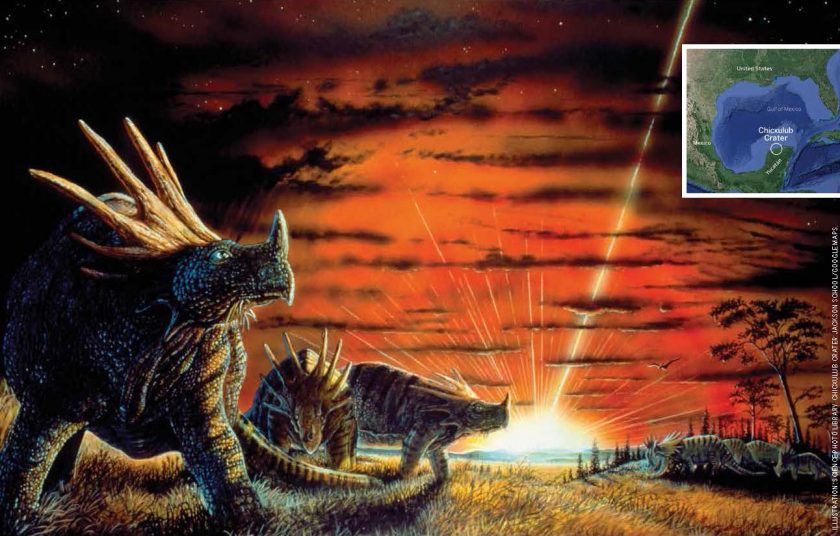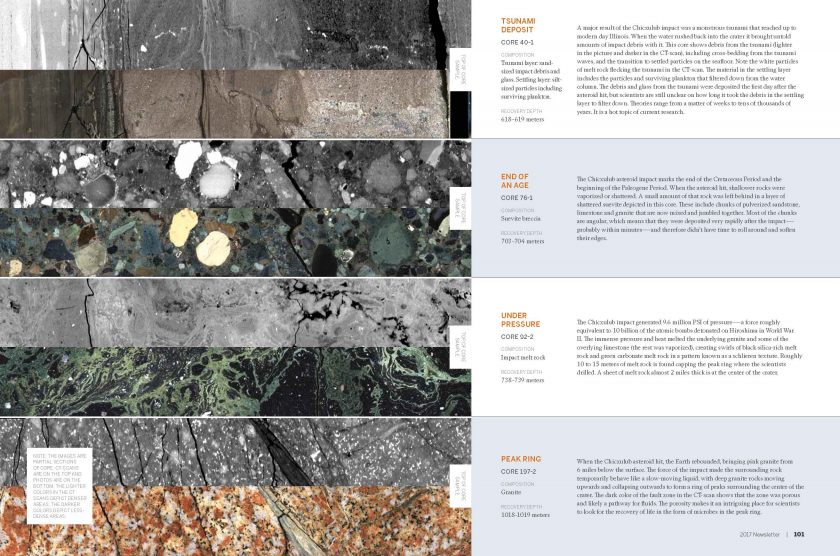Chicxulub Revealed: Rocks record what happened the day the dinosaurs died
November 20, 2017

Deep beneath layers of limestone on the Yucatán Peninsula and continental shelf is Chicxulub — the best preserved large impact crater on Earth. It was created by an asteroid that slammed into the planet 66 million years ago and wiped out 75 percent of life on Earth, including all non-avian dinosaurs.
In May 2016, the Jackson School of Geosciences helped lead International Ocean Discovery Program (IODP) Expedition 364, to drill into the peak ring of the Chicxulub Crater to learn more about how the Earth responded to that catastrophic impact. Co-led by University of Texas Institute for Geophysics Research Professor Sean Gulick, the mission pulled more than 800 meters of core from the depths of the seafloor. But sheathed in plastic casing and stored in a tightly packed, refrigerated shipping container, the cores couldn’t be closely examined aboard the lift-boat where they were pulled from the sea.
That changed in fall 2016 when the IODP Chicxulub research team converged in Bremen, Germany. They conducted intensive analysis on the core samples using high-resolution photos and CT-scans that revealed the position of mineral grains and fractures throughout the cores.
The rocks themselves contain the truth about the impact and the recovery that followed. Each section has a story to tell. The science will go on for years, but you can click on the image below and see what some of the cores tell us about the day the dinosaurs died.
Back to the Newsletter

